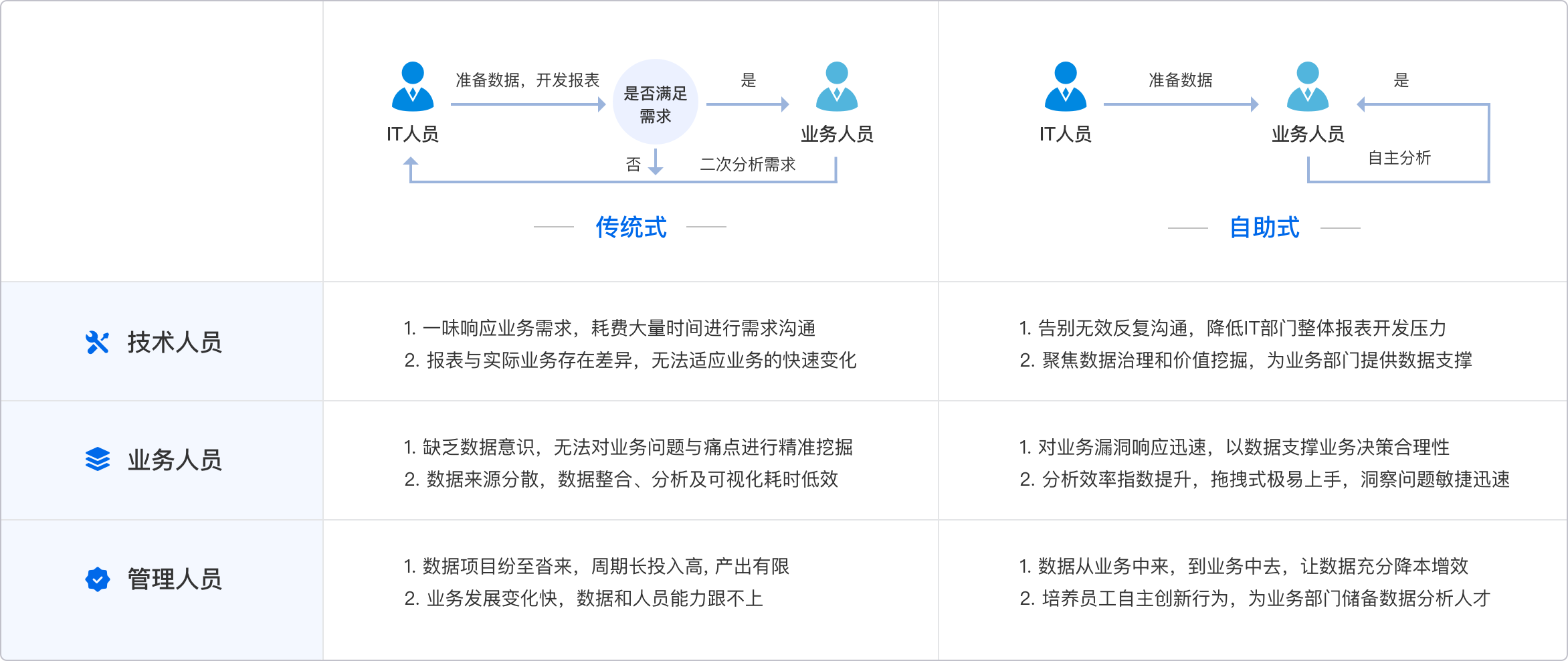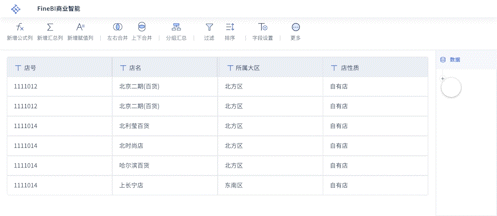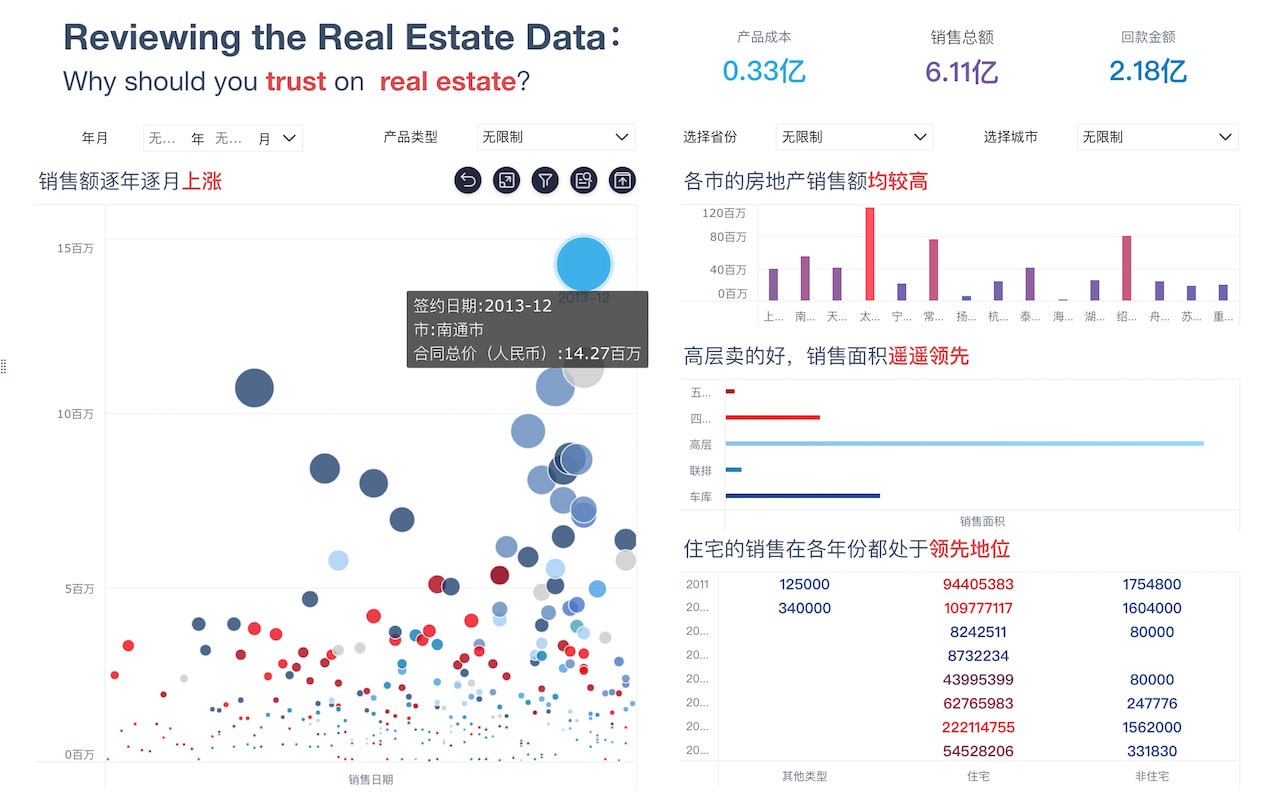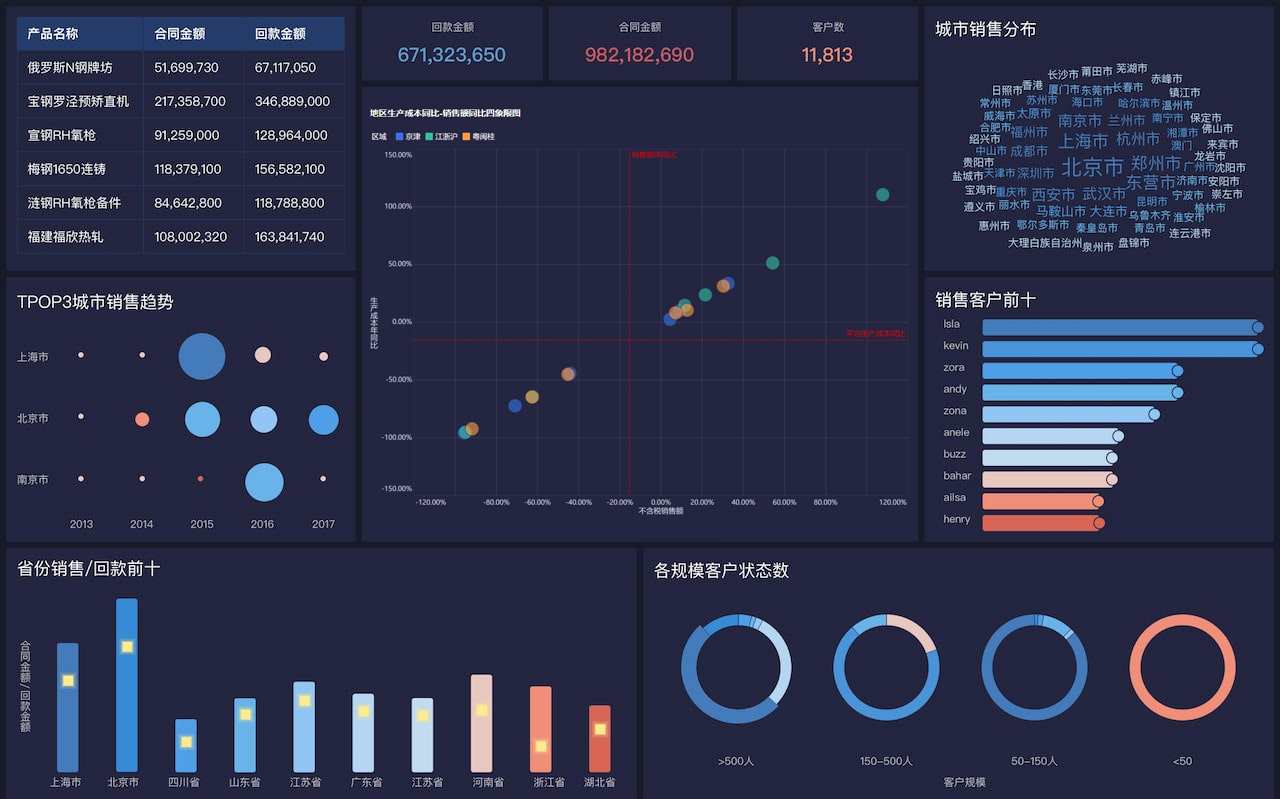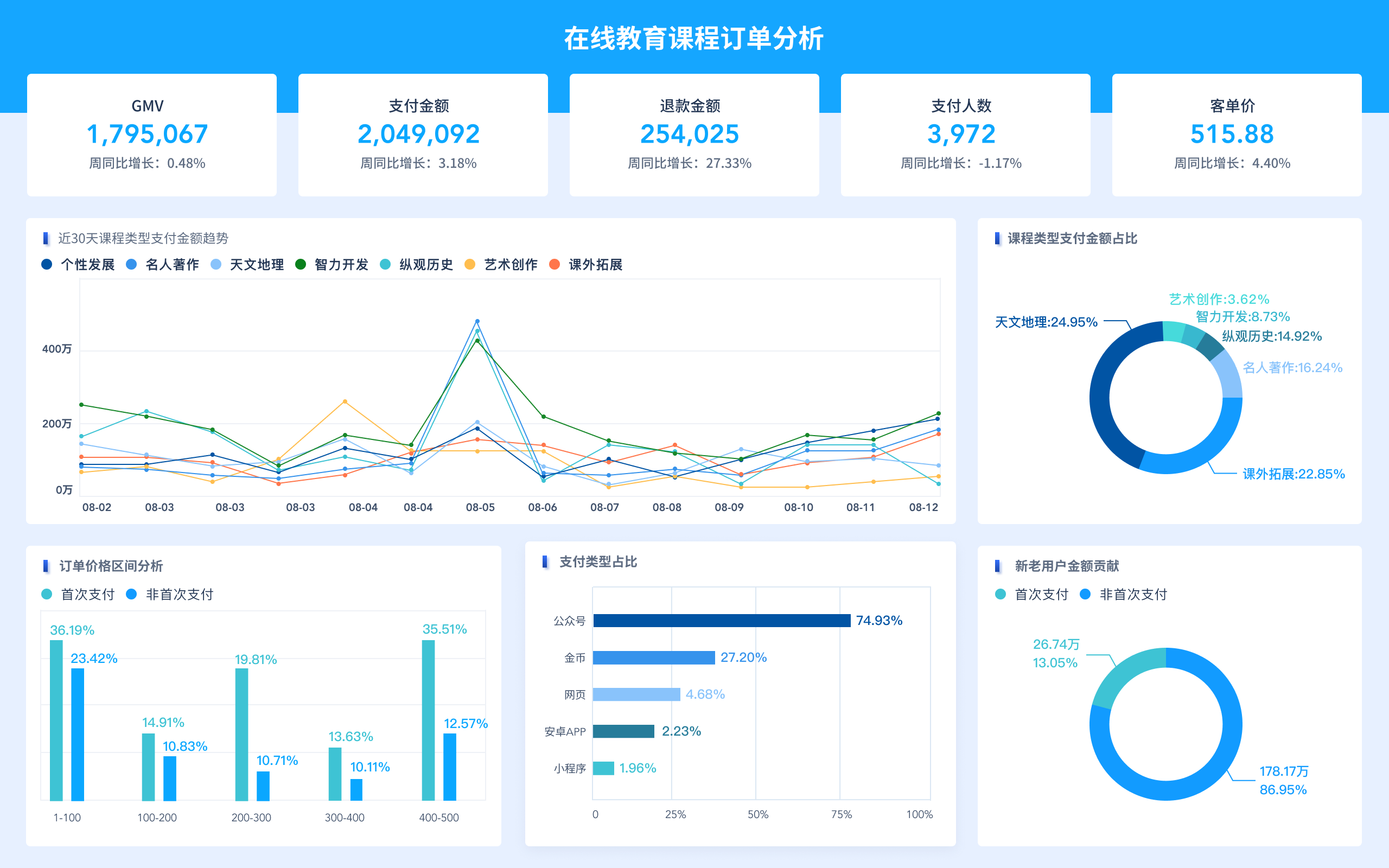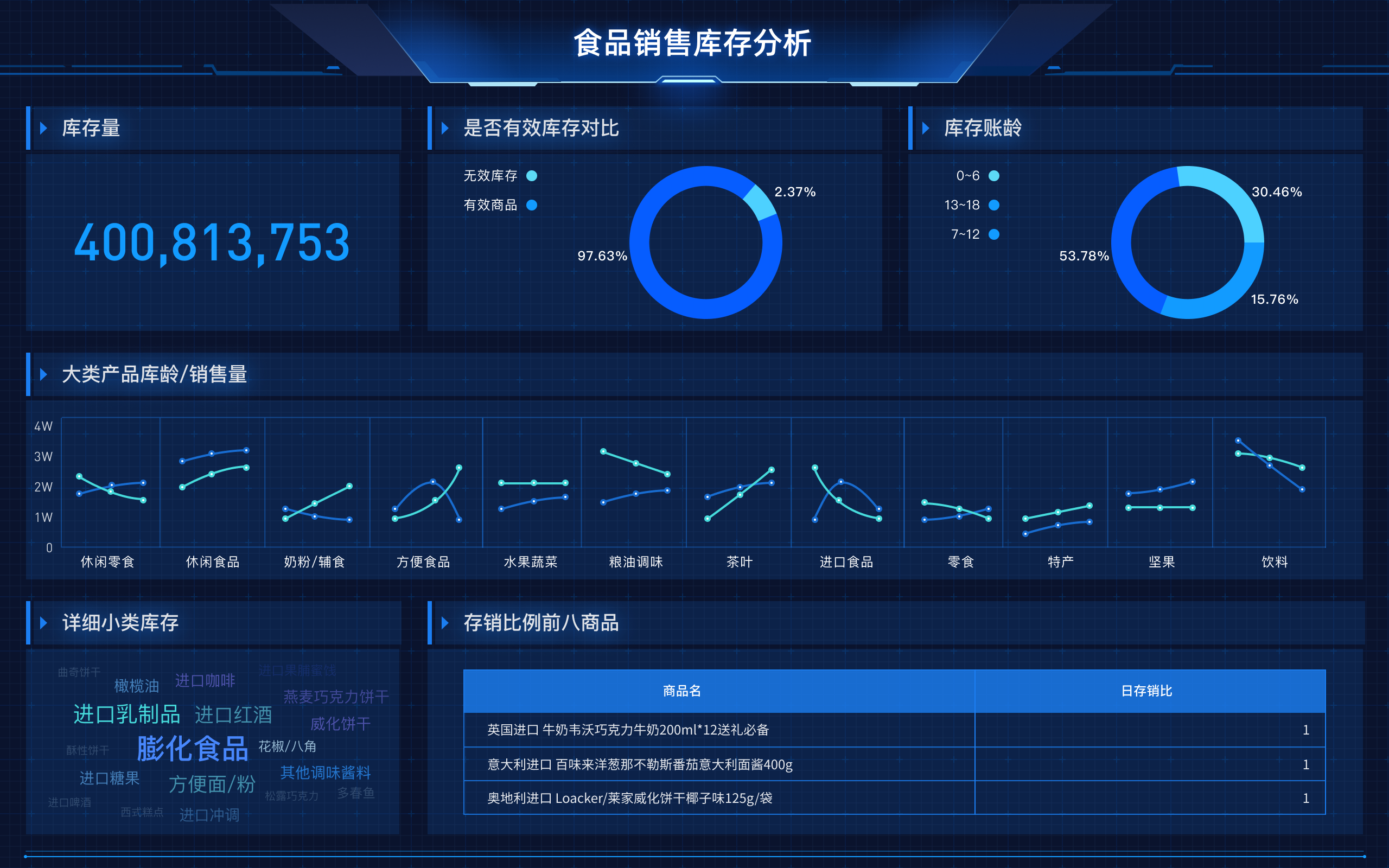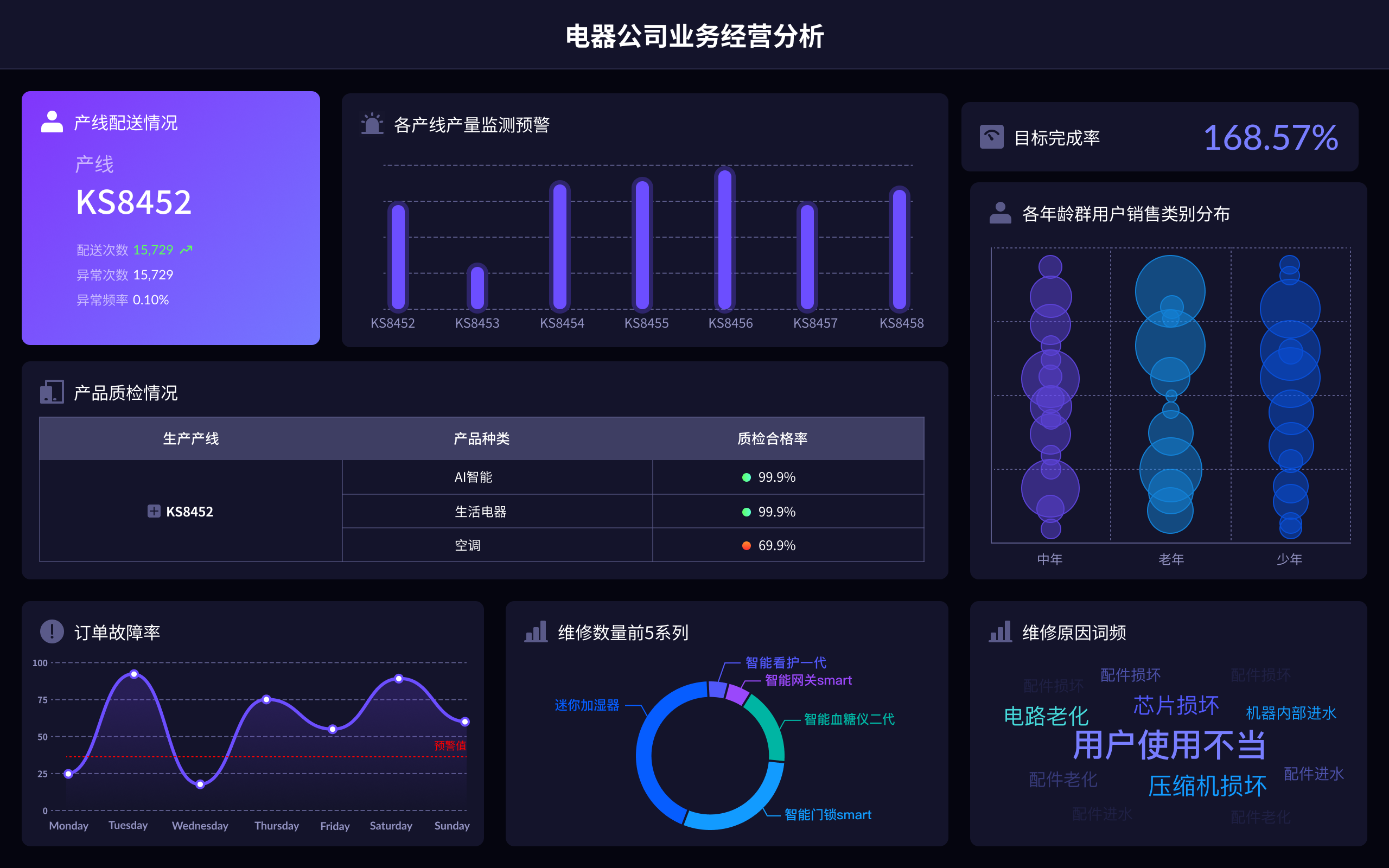
数据仓库的最终目的在于为决策支持、数据整合、提高数据访问速度、历史数据存储等提供一个高效的解决方案。其中,为决策支持是数据仓库的核心目的。数据仓库通过将大量的业务数据集中存储和管理,提供了一个统一的视图,使企业能够从多个角度进行数据分析和挖掘。这种综合的数据视图有助于发现隐藏的模式和趋势,从而支持高层管理人员做出明智的战略决策。例如,零售企业可以通过分析数据仓库中的销售数据来识别畅销产品和季节性趋势,并据此调整库存和营销策略,以提高盈利能力和市场竞争力。
一、数据整合
数据仓库的一个重要功能是整合来自不同来源的数据。企业通常会有多个业务系统,如ERP、CRM、财务系统等,这些系统中存储的数据格式和结构各不相同,导致信息孤岛的出现。数据仓库通过抽取、转换和加载(ETL)过程,将这些异构数据源的数据进行清洗、转换和合并,存储到一个统一的数据库中。这种数据整合不仅消除了信息孤岛,还提高了数据的质量和一致性,为企业提供了一个完整、准确的业务视图,从而支持更为复杂的分析和决策。
数据整合的过程往往涉及到数据清洗和数据转换。数据清洗是指去除数据中的噪声和错误,确保数据的准确性和完整性。例如,同一客户在不同系统中的名字可能会有拼写差异,清洗过程会将这些差异统一。数据转换则是将数据从一种格式或结构转变为另一种,更加适合分析和存储的格式。例如,将交易记录从文本格式转换为结构化的表格式。通过这些步骤,数据仓库确保了数据的高质量和高一致性。
二、提高数据访问速度
数据仓库的设计目标之一是提高数据访问的速度和效率。在大数据时代,企业需要处理的数据量庞大,数据仓库的架构和技术使得查询和分析的速度显著提升。数据仓库通过对数据进行索引、分区和聚合等优化处理,使得数据查询和分析的响应时间大幅缩短。对于企业而言,这意味着管理层能够在更短的时间内获取所需的信息,从而加快决策过程。
为了实现高速的数据访问,数据仓库通常采用列式存储和内存计算等技术。列式存储通过将相同列的数据存储在一起,减少了查询时的I/O操作,提高了查询效率。内存计算则通过将部分或全部数据加载到内存中进行计算,进一步加快了数据处理速度。此外,数据仓库还支持并行处理和分布式计算,使得大规模数据集的分析变得更加高效和快速。
三、历史数据存储
数据仓库专为存储和管理历史数据而设计。历史数据的存储和分析有助于企业理解过去的业务行为和趋势,从而制定未来的策略和计划。与传统的数据库不同,数据仓库能够存储跨越多年的数据,这为企业进行长时间跨度的分析提供了可能。
历史数据的存储要求数据仓库具有强大的存储能力和扩展性。数据仓库通常采用分层存储架构,将历史数据和当前数据分开存储,以便于管理和访问。此外,数据仓库还支持数据归档和压缩技术,能够有效减少存储空间的占用。通过对历史数据的深入挖掘,企业可以发现业务发展中的关键趋势,识别潜在的机会和风险,从而优化业务流程和战略规划。
四、支持复杂分析和数据挖掘
数据仓库提供了一个强大的平台,用于支持复杂的数据分析和挖掘。通过整合和存储大量的企业数据,数据仓库为高级分析和数据挖掘提供了坚实的基础。企业可以利用这些数据进行各种高级分析,如预测分析、关联分析、聚类分析等,来获取更深层次的商业洞察。
复杂分析通常需要借助于多维数据建模技术,如OLAP(在线分析处理)。OLAP允许用户以多维的方式查看数据,从不同的维度和层次进行切片和切块分析,快速获取所需的商业信息。数据挖掘则利用机器学习和统计分析技术,从海量数据中挖掘出隐藏的模式和规律,帮助企业发现新机遇和潜在问题。例如,通过数据挖掘,零售企业可以识别客户的购买习惯,进而进行个性化推荐,提高客户满意度和忠诚度。
五、提高业务敏捷性
数据仓库的使用能够显著提高企业的业务敏捷性。通过快速获取和分析数据,企业可以更加灵活地应对市场变化和客户需求。在竞争激烈的市场环境中,企业需要快速响应各种变化,这就需要一个高效的数据分析平台来支持。
数据仓库通过提供实时或近实时的数据更新,确保企业能够及时获取最新的业务数据进行分析。企业可以利用这些数据快速调整产品策略、营销策略和供应链管理,以应对市场变化和客户需求的变化。此外,数据仓库还支持自助式BI(商业智能)工具,使得非技术用户也能够轻松访问和分析数据,提高了组织内的协作和效率。
六、数据安全与合规性
数据仓库在数据安全和合规性方面也扮演着重要角色。随着数据隐私和安全法规的日益严格,企业必须确保其数据仓库符合相关法律法规的要求。数据仓库通过提供强大的数据安全机制,保护企业数据免受未经授权的访问和泄露。
数据仓库通常采用多层次的安全措施,包括用户身份验证、访问控制、数据加密等,以保障数据的安全性。此外,数据仓库还支持审计和日志记录功能,能够跟踪和记录数据的访问和使用情况,确保合规性和透明性。在数据隐私方面,数据仓库可以通过数据匿名化和伪匿名化技术,保护个人敏感信息,符合GDPR等数据保护法规的要求。
七、成本效益
构建和维护数据仓库需要一定的成本投入,但其带来的效益远超其成本。通过提高决策质量、优化业务流程和增强客户满意度,数据仓库能够为企业带来显著的经济效益。企业需要通过全面的成本效益分析,来评估数据仓库的价值。
数据仓库能够通过减少数据冗余和提高数据管理效率来降低运营成本。此外,通过支持复杂的数据分析,数据仓库能够帮助企业识别浪费和低效的环节,优化资源配置和业务流程,从而进一步降低成本。通过提高决策的准确性和及时性,数据仓库还能够帮助企业抓住市场机会,增加收入和利润。
八、支持企业数字化转型
数据仓库是支持企业数字化转型的重要工具。在数字化时代,数据已经成为企业最重要的资产之一,数据仓库通过提供统一、可靠的数据平台,帮助企业实现数字化转型。企业可以利用数据仓库的能力,将传统业务流程数字化,提高效率和创新能力。
数据仓库支持与其他数字化技术的集成,如大数据分析、人工智能和物联网等,帮助企业实现智能化和自动化。例如,通过结合物联网技术,制造企业可以实时监控生产设备的状态和性能,通过数据仓库进行分析,优化生产流程和维护策略。通过实现数字化转型,企业能够提高竞争力,适应快速变化的市场环境,实现可持续发展。
九、结论
数据仓库的最终目的是通过为企业提供一个高效的决策支持平台,整合和管理大量的业务数据,来提高企业的竞争力和业务绩效。通过数据整合、提高数据访问速度、存储历史数据、支持复杂分析、提高业务敏捷性、确保数据安全与合规、实现成本效益和支持数字化转型,数据仓库帮助企业在信息化时代取得成功。在构建数据仓库时,企业需要充分考虑其业务需求和技术环境,选择合适的架构和技术方案,以实现数据仓库的最大价值。
相关问答FAQs:
What is the ultimate purpose of a data warehouse?
The ultimate purpose of a data warehouse is to serve as a centralized repository that consolidates data from various sources, enabling organizations to perform comprehensive analysis and reporting. By storing historical and current data in a structured manner, a data warehouse allows businesses to make informed decisions based on accurate and timely insights. This centralized system supports data integration, ensuring that information from disparate sources is harmonized, which enhances data quality and consistency. Additionally, a data warehouse facilitates advanced analytics, including data mining and predictive analytics, empowering organizations to identify trends, forecast future outcomes, and gain a competitive edge in the market.
The architecture of a data warehouse is designed to support query performance and ease of access, allowing users to retrieve information efficiently. This design often involves a star or snowflake schema, which organizes data into fact and dimension tables, optimizing the retrieval of complex queries. The ultimate goal is to provide a robust platform for business intelligence (BI) tools, enabling users from various departments—such as marketing, finance, and operations—to extract actionable insights without requiring deep technical expertise.
Moreover, a data warehouse can enhance data governance and compliance. By centralizing data management, organizations can implement consistent data security measures and maintain a clear audit trail of data usage. This is particularly important in industries that are subject to regulatory scrutiny, as it ensures that organizations can demonstrate compliance with data protection laws and standards.
How does a data warehouse improve decision-making processes in organizations?
A data warehouse significantly enhances decision-making processes by providing a single source of truth for data analysis. With data aggregated from multiple sources, stakeholders have access to a comprehensive view of the organization's performance, which is essential for informed decision-making. This centralized access to data reduces the time spent on data gathering and reconciliation, allowing decision-makers to focus on analysis and strategy.
The structured nature of a data warehouse facilitates complex querying and reporting. Business users can generate reports that span multiple departments and functions, enabling cross-functional analysis that reveals correlations and insights that might not be visible when data is siloed. For example, a marketing team can analyze the effectiveness of campaigns by correlating sales data with customer engagement metrics stored in the warehouse, leading to more targeted and effective marketing strategies.
Furthermore, a data warehouse supports historical analysis, allowing organizations to track performance over time. This historical perspective is invaluable for identifying long-term trends and patterns that can inform strategic planning. By comparing current data against historical benchmarks, organizations can assess the impact of their initiatives and make data-driven adjustments to their strategies.
The implementation of advanced analytics tools within a data warehouse also enhances decision-making. Predictive analytics, for instance, can help organizations forecast future sales trends, customer behavior, and operational needs. By leveraging these insights, businesses can proactively adapt their strategies, allocate resources more effectively, and mitigate risks.
What are the key components of a data warehouse architecture?
Understanding the key components of a data warehouse architecture is essential for grasping how it functions to facilitate data analysis and reporting. A typical data warehouse architecture includes the following components:
-
Data Sources: These are the various origins of data that feed into the warehouse. Data can come from internal systems such as ERP, CRM, and transactional databases, as well as external sources like social media, market research, and third-party APIs. The diversity of data sources is crucial for creating a comprehensive view of the organization's operations.
-
ETL Process (Extract, Transform, Load): This process involves extracting data from source systems, transforming it into a suitable format, and loading it into the data warehouse. The transformation step is particularly important as it ensures data quality and consistency. ETL tools automate this process, enabling seamless integration of data from different sources.
-
Data Storage: The data warehouse itself is where the transformed data is stored. This storage system is optimized for query performance and is often designed using star or snowflake schemas. Fact tables hold quantitative data for analysis, while dimension tables store descriptive attributes related to the facts, making it easier to conduct complex queries.
-
Metadata: Metadata is data about the data stored in the warehouse. It provides essential information regarding the data structure, definitions, and lineage. Metadata enhances the usability of the warehouse by helping users understand the context and meaning of the data, which is critical for effective analysis.
-
Data Access Layer: This layer includes the tools and interfaces that users employ to access and analyze the data. Business intelligence (BI) tools, reporting software, and ad-hoc query tools are part of this layer, enabling users to create reports, dashboards, and visualizations that derive insights from the data.
-
Data Governance and Security: Ensuring data quality, security, and compliance is a critical aspect of data warehouse architecture. Data governance frameworks define policies and procedures for data management, while security measures protect sensitive information from unauthorized access.
-
Data Mart: Sometimes, organizations create data marts as subsets of the data warehouse. Data marts focus on specific business areas, such as sales or finance, providing tailored data sets for departmental needs. This approach allows for quicker access to relevant data while maintaining the overall integrity of the data warehouse.
By understanding these components, organizations can better appreciate how a data warehouse functions and the value it brings in terms of data-driven decision-making, analytical capabilities, and operational efficiency.
本文内容通过AI工具匹配关键字智能整合而成,仅供参考,帆软不对内容的真实、准确或完整作任何形式的承诺。具体产品功能请以帆软官方帮助文档为准,或联系您的对接销售进行咨询。如有其他问题,您可以通过联系blog@fanruan.com进行反馈,帆软收到您的反馈后将及时答复和处理。


